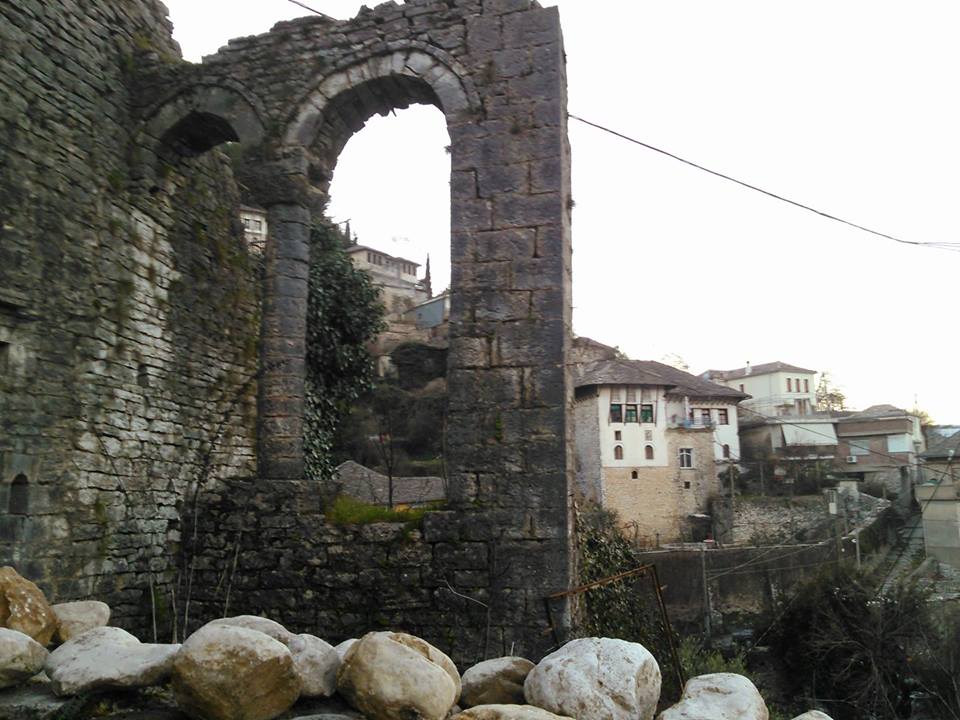TIRANA, July 20 – UNESCO’s World Heritage Committee has called on Albanian authorities to carefully examine plans on a bypass road in the southern city of Gjirokastra, a UNESCO World Heritage site since 2005, before proceeding with its implementation.
In its latest annual meeting in Poland’s Krakow this month, the World Heritage Committee expressed concern over the proposed Gjirokastra bypass project, also strongly opposed by some of the country’s best cultural heritage experts.
Albanian experts say the bypass design project, already approved by the National Restoration Council, risks destroying part of the museum city of Gjirokastra and endangers the surrounding area.
In a petition to the country’s highest authorities earlier this year, architects, academics and culture heritage specialists warned the proposed concrete modern structure would ruin the town’s late Middle Ages architecture and poses a threat to the local landmark castle, already damaged by a late 2016 quake.
The government has insisted the project will further boost tourism in town by easing traffic and creating pedestrian zones.
However, UNESCO has unveiled Albania has temporarily suspended the bypass project until “further evaluation of the needs and other possible options to regulate traffic within the property” as informed through an April 2017 letter by Albanian authorities.
“As for the bypass road design, it should be noted that the World Heritage Centre has received a number of concerns from civil society as well as from the World Bank regarding the potential negative impact of the bypass on the outstanding universal value of the property,” says the World Heritage Committee.
In a draft decision, the UN’s world heritage body requests Albanian authorities to take into consideration the review and recommendations provided by UNESCO advisory bodies such as ICOMOS, concerning the infrastructural projects, and in particular, with regard to the Gjirokastra Bypass Road project. The United Nations Educational, Scientific and Cultural Organization, UNESCO, says Albania needs to reassess the bypass carrying capacity and scale in order to minimize potential adverse impacts of this development project on the outstanding universal value of property.
Already 12 years under UNESCO protection, Gjirokastra is currently having its à‡erà§iz Topulli square and Bazaar Pass area rehabilitated.
The World Heritage Committee also urges Albania to maintain the moratorium on new constructions within the property and buffer zones until the approval of integrated urban conservation and development tools for the protection and management of Gjirokasta and Berat, both of which inscribed on UNESCO as a rare example of an architectural character typical of the Ottoman period.
Because of illegal construction posing a threat to place Gjirokastra on the List of World Heritage in Danger, Albania authorities imposed a moratorium on construction in October 2013.
Albanian archaeologist Moikom Zeqo has earlier said the bypass project also endangers the 13th century local landmark castle, already damaged by a late 2016 earthquake in Ioannina, neighbouring Greece, some 90 km off Gjirokastra.
Zeqo has warned it is categorically prohibited to intervene in the city’s historic center with modern time elements because of destroying the unity of the historic centre.
“This is also determined by law. We cannot intervene because of ruining what is known as the address of the city’s memory. This must not be allowed. It’s wrong,” says Zeqo, adding that the concrete work and its weight pose a severe threat to the already weak geological structure of the foundations where the castle and the city itself lie.
Inscribed on UNESCO as a rare example of an architectural character typical of the Ottoman period, Gjirokastra, situated in the Drinos river valley in southern Albania, features a series of outstanding two-story houses which were developed in the 17th century. The town also retains a bazaar, an 18th-century mosque and two churches of the same period. The 13th-century citadel provides the focal point of the town with its typical tower houses.
Government officials claim the introduction of a bypass road will have a direct impact on the traffic in the historic centre of the UNESCO heritage city, which set to turn into a car-free zone.
“This project aims at improving vehicle circulation and returning the historic center back to its identity. Once completed, the bypass will serve all citizens and visitors of Gjirokastra and keep the historical center activities undisturbed by the traffic,” the government says.
Gjirokastra is the hometown of internationally renowned writer Ismail Kadare whose home turned into a museum house in early 2016 hon te writer’s 80th birthday.
Late dictator Enver Hoxha also grew up in Gjirokastra with his home currently housing the local ethnographic museum.
A UNESCO World Heritage site since 2005, Gjirokastra attracts one of the biggest number of foreign tourists in Albania.
Earlier this month, UNESCO’s World Heritage Committee inscribed Albania’s Gashi River and Rrajce as the first two Albanian natural sites on the World Heritage List. The two sites were inscribed as an extension of the World Heritage site of the Primeval Beech Forests of the Carpathians and the Ancient Beech Forests of Germany.










